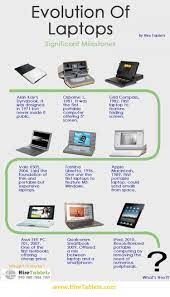Laptop displays have come a long way since the early days of portable computing. In the past, laptop screens were limited by technology and cost factors, resulting in low-resolution and dim displays. However, advancements in display technology have led to significant improvements in terms of resolution, color accuracy, brightness, and overall visual quality.
1. Resolution and Pixel Density:
Resolution refers to the number of pixels a display can show horizontally and vertically. Higher resolution results in sharper and more detailed images. The most common display resolutions in laptops are:
- HD (1366×768): Found in entry-level and budget laptops, this resolution provides a basic viewing experience.
- Full HD (1920×1080): Standard resolution in most laptops, offering a good balance between clarity and performance.
- Quad HD (2560×1440) and 4K UHD (3840×2160): Premium laptops often boast these resolutions, delivering stunning visuals, ideal for content creators and multimedia enthusiasts.
Pixel density is also crucial as it determines how sharp the content appears. Higher pixel density means individual pixels are harder to discern, resulting in a smoother and more immersive viewing experience.
2. Panel Technology:
Various panel technologies are used in laptop displays, each with its own set of advantages and disadvantages:
- TN (Twisted Nematic): Offers fast response times but limited color reproduction and poor viewing angles.
- IPS (In-Plane Switching): Known for better color accuracy and wider viewing angles, making it suitable for multimedia and professional tasks.
- OLED (Organic Light-Emitting Diode): Provides deep blacks, vibrant colors, and energy efficiency. Often found in premium laptops for top-tier visuals.
3. Refresh Rate:
Refresh rate refers to the number of times per second the display refreshes the image. A higher refresh rate, such as 120Hz or 144Hz, results in smoother animations and reduced motion blur, which is particularly beneficial for gamers and creative professionals.
4. Touchscreens:
Many modern laptops come equipped with touchscreens, allowing users to interact with the display using gestures, taps, and swipes. Touchscreens have become more prevalent and offer greater versatility, especially for 2-in-1 convertible laptops that can transform into tablets.
5. Bezel Design and Aspect Ratio:
Bezel design plays a role in the overall aesthetics of a laptop and affects the screen-to-body ratio. Slim bezels provide a more immersive experience and allow manufacturers to fit larger displays into smaller form factors.
The aspect ratio of a laptop display, typically 16:9, affects how content is displayed on the screen. Wider aspect ratios like 16:10 or 3:2 offer more vertical space, making them beneficial for productivity and multitasking.
Factors to Consider When Choosing a Laptop Display:
When purchasing a laptop, the display is a critical aspect to consider. Here are some factors to keep in mind:
Intended Use: Consider your primary usage. For content creators and gamers, a high-resolution display with good color accuracy and refresh rate is essential. Casual users may opt for a more budget-friendly Full HD display.
Portability: If portability is a priority, a smaller screen size with a lightweight design might be preferable.
Battery Life: Higher resolution and brighter displays tend to consume more power. Balance your visual preferences with the need for extended battery life.
Touchscreen Requirement: Touchscreens are convenient but can add to the cost. Assess whether it aligns with your usage and preferences.
Panel Technology: If color accuracy and wider viewing angles are crucial, consider laptops with IPS or OLED panels.
The laptop display is a crucial component that significantly impacts our computing experience. Technological advancements have allowed laptop manufacturers to produce devices with stunning visuals, improved color accuracy, and smooth animations. When choosing a laptop, carefully consider your specific needs and budget, and opt for a display that complements your usage patterns. Whether you’re a professional, a student, or an entertainment enthusiast, a high-quality laptop display will undoubtedly enhance your digital journey and elevate your overall computing experience.
